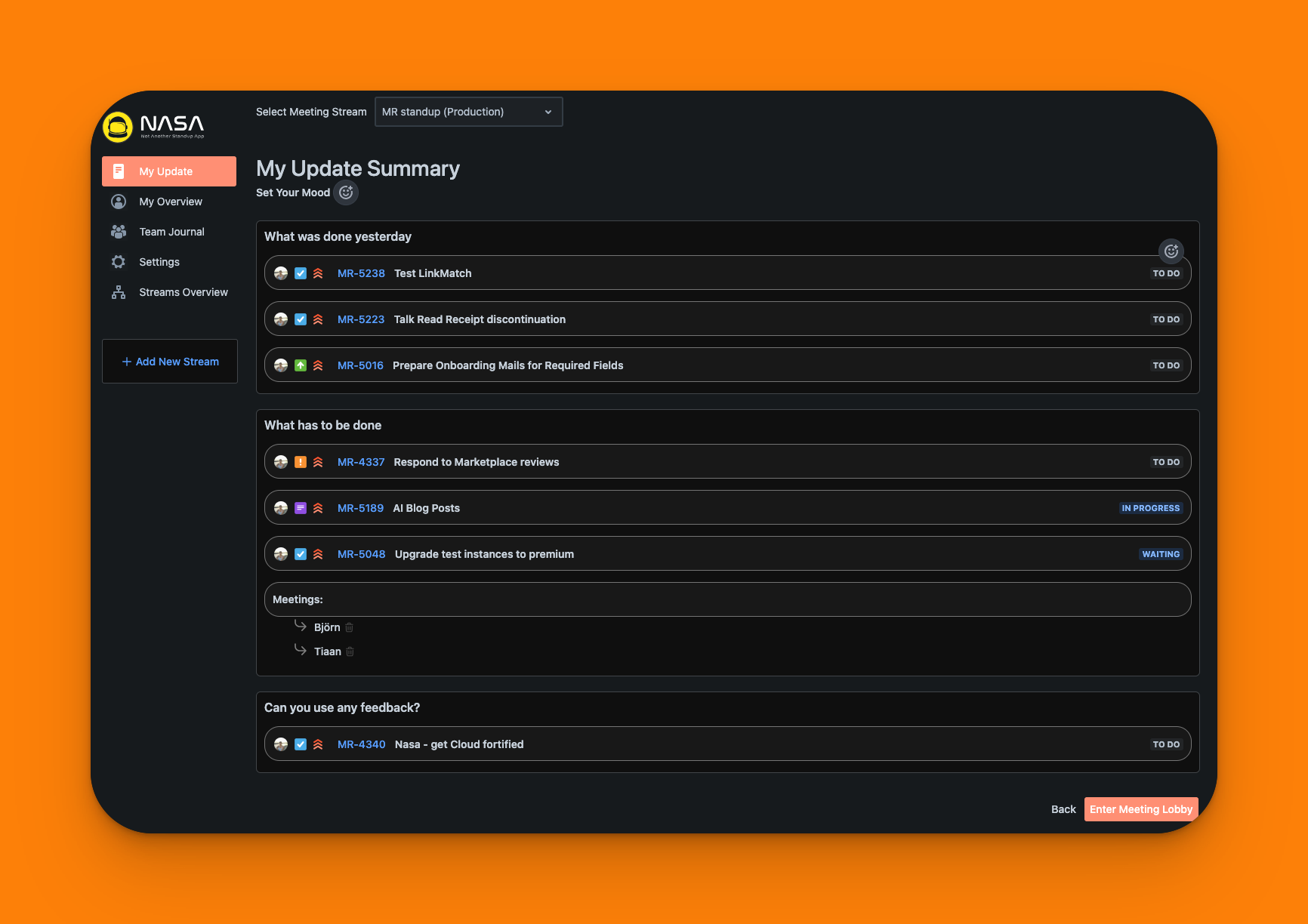Agile teams thrive on collaboration and swift adaptability.
At the core of this dynamic workflow are daily standup meetings—vital pulses that synchronize team efforts and spotlight the day’s objectives. These quick huddles keep projects on track and teams in sync.
What is a Daily Standup Meeting?
A daily standup meeting is a brief, daily gathering of team members to discuss progress, share information, and identify potential roadblocks. It is an essential component of the Scrum framework and is used by agile teams to facilitate communication, collaboration, and coordination. The daily standup meeting is typically held at the same time and place every day, and team members are encouraged to stand up to keep the discussion brief and focused.
Preparation: The Key to Standup Success
Prep your team member for success.
A clear agenda sets the tone. Before the standup, have all updates logged. A prepared team dives straight into progress, not process. Coordination and communication among scrum team members are crucial for effective meetings and project progress.
Roles and Responsibilities
In a daily standup meeting, each team member has a specific role and responsibility:
-
Scrum Master: The Scrum Master facilitates the meeting, ensures that the discussion stays on track, and helps to identify and remove impediments.
-
Development Team Members: Each development team member shares their progress, plans, and any obstacles they are facing. They are responsible for providing updates on their work and for listening to and supporting their colleagues.
-
Product Owner: The Product Owner may attend the meeting to provide input and guidance, but their primary role is to ensure that the development team has a clear understanding of the sprint goal and the product backlog.
The Three-Question Framework: Keeping Standups Focused within the Scrum Framework
Focus your daily scrum with three structured questions:
-
yesterday’s achievements,
-
today’s goals,
-
and existing blockers.
This clarity cuts through complexity, aligning efforts swiftly.
Time-Boxing: Ensuring Daily Scrum Meetings Are Brief Yet Effective
Time is of the essence. Limit daily scrums to a brief 15-minute meeting each day of a sprint.
This discipline ensures discussions are concise and crucial points are covered without delay.
Engagement Tips: Facilitating Active Participation by the Scrum Master
Engage every voice. Encourage sharing, foster listening, and address blockers. This cultivates a collaborative environment where every update is a step forward. Additionally, ensure that the daily scrum meeting is structured and emphasizes key roles in team coordination and accountability.

Common Pitfalls to Avoid
While daily standup meetings can be highly effective, there are several common pitfalls to avoid:
-
Status Meeting: Daily standup meetings should not be used as a status meeting, where team members simply report on their progress without discussing obstacles or seeking help.
-
Problem-Solving: Daily standup meetings should not be used for problem-solving or detailed discussions. Instead, team members should identify issues and schedule separate meetings to discuss and resolve them.
-
Lack of Preparation: Team members should come prepared to the meeting, with a clear understanding of their progress, plans, and any obstacles they are facing.
-
Dominating the Conversation: Team members should avoid dominating the conversation and ensure that everyone has an opportunity to share their updates and concerns.
-
Not Following the Agenda: Team members should stick to the agenda and avoid going off on tangents or discussing unrelated topics.
By avoiding these common pitfalls, teams can ensure that their daily standup meetings are effective, efficient, and help to drive progress towards their sprint goals.
Technology Integration for Remote Teams
You might be one of the many teams using Jira to track development work. It might work for you, but for many teams it often doesn’t.
Don’t panic. You wouldn’t be the last case of a complete catastrophe.
If you have an experienced Scrum Master but you’re still having a hard time enforcing all these best practices, there’s still something you can do. Integrating a task board can enhance the effectiveness of daily scrums and standup meetings by allowing teams to ‘Walk the Board’, reviewing items based on their proximity to completion.
Leveraging the NASA App for Streamlined Standups
Adopt NASA—Not Another Standup App, which directly integrates with Jira, and streamline the standup process. Conducting daily standup meetings for remote teams can be challenging due to differing time zones and the need for effective communication, but utilizing video conferencing tools and asynchronous updates can help keep all team members engaged and informed.
Ensure that every discussion is a launchpad for immediate action!

Conclusion
With preparation, focus, and the right tools like NASA, daily standups become a keystone of agile success. Scrum team members play a crucial role in these standups by coordinating their tasks and addressing challenges, ensuring a collaborative and efficient process. Also, consider the practical guidance of this article on how we NASA has become essential for our transition into a 4-day week and take inspiration!




